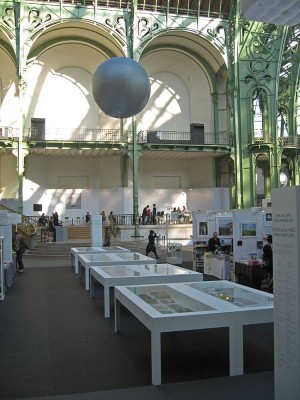File this under obvious, true, and worth repeating: Books are meant to be touched. Read all the reviews and watch all the preview videos you want, but the only way to truly know a book is to hold it in your hot little hands. This is especially the case for really good photobooks, ones in which the photographs and the book format support and inform each other.
A couple of years ago, I started thinking about this little truism in relation to classic photobooks. In 2011, the folks at Paris Photo decided to pay tribute to photobooks published in the past 15 years that have had an important and lasting effect on the medium. It was a bit of a surprise when Harper Levine nominated The Photobook: A History Volumes I and II as his most important book(s). In his nomination statement Levine explained, “This oft-quoted reference book forever changed the way photographic literature is interpreted. Arguing that the truest representations of the photographer’s vision can be seen through printed matter, Parr and Badger have altered the discourse and resurrected or created the careers of numerous photographers.”
Like most people who love photobooks, I bought Volumes I and II as soon as they were published (Phaidon, 2004/2006) and read them cover to cover. These books are invaluable in so many ways, not the least of which is the wonderful thematic overview they give of the medium’s history. Just reading their descriptions of the books is an excellent way to school yourself in how to analyze and talk about a photobook. But it’s really the list of books they present that has been so influential. Being included in one of these books is an immediate photographic imprimatur, a career and market changer.
For photobook lovers, Volumes I and II are an invitation to a dialog, one that you can’t participate in until you’ve experienced the books in discussion. Without having actually looked through a copy of The Americans, for example, how can you fully understand, let alone affirm or refute, the claim that in the book, “Ideas ebb and flow, are introduced, discarded, recapitulated, transfigured, transposed, played off and piled up against each other with the exuberant energy and precise articulation of a Charlie Parker saxophone solo (VI, p. 247).” (I’ll let you know my thoughts about this claim in a subsequent post.)
To get the most out of these decisive histories, you have to actually look at the books. For those with limited budgets and space, collecting photobooks like the ones mentioned in VI and VII is a fantastical impossibility. The good news is that many of the books are in libraries and other public institutions. Of the 197 books listed in Volume I, for example, I was able to locate all but about 20 of the books in various libraries.
I travel quite a bit for my work, and so, when I’m planning a trip, I run various VI and VII books through WorldCat to find out if there are any copies nearby. I’ll be sharing my discoveries about these books as I’m able to get my hands on them. —Mary Goodwin
